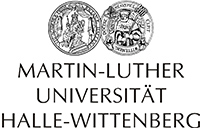Physicists Develop “Time Machine” for Materials Science

Researchers at Martin Luther University Halle-Wittenberg (MLU), Freie Universität Berlin, and the Technical University of Munich (TUM) hope to create a machine that would make that possible. They plan to develop their “time machine” for the large-scale research equipment at the Helmholtz-Zentrum Berlin für Materialien und Energie (HZB), which would mean a helpful improvement for the facility.
The German Federal Ministry of Education and Research has granted the project around two million euros, with MLU contributing 1.1 million euros.
“BESSY II” is unique among scientific equipment in Germany. Located at the Helmholtz-Zentrum Berlin, it produces X-rays whose energy and polarization properties can be precisely adjusted. At the core of “BESSY II” is a particle accelerator that can speed up electrons almost to the speed of light. The electrons circle around a magnetic storage ring, producing X-ray flashes in the process.
“You can imagine the Bessy storage ring as a camera with an incredibly fast flash. The X-rays are produced in pulses, which makes it possible to conduct experiments with a very high time resolution,” says physicist Prof. Dr. Georg Woltersdorf from MLU. He heads the project together with Prof. Dr. Wolfgang Kuch from Freie Universität and Prof. Dr. Christian Back from TUM. The equipment’s special features have put it in high demand among materials researchers all over the world.
Over 2000 scientists conduct experiments with “BESSY II” annually, and there is a long waiting list. Another challenge to working with the equipment is that researchers must define in advance the precise parameters they want to measure and when. According to Woltersdorf, a small mistake in the experimental design could render void an entire sequence of measurements.
The current project focuses on this issue: High-speed data acquisition electronics should make it possible to record and analyze the signal from every X-ray flash that occurs during an experiment. Data are produced at a rate of several terabytes per hour. Woltersdorf says that the new construction will improve performance and productivity.
Thanks to the electronics, the data measurements can be immediately logged at the correct time. The raw data it stores allows scientists to jump to any point in time after the experiment is over and apply a different time grid, Woltersdorf explains. To make even better use of the electronics system, researchers are also experimenting with laser equipment used to stimulate samples through pulses. The process makes it possible to study the dynamics of matter on a picosecond time scale. A picosecond is equal to one trillionth of a second.
It is not the first time this team of researchers has come together to work at “BESSY II.” In recent years, the three partners joined forces at the Helmholtz-Zentrum Berlin to set up the “VEKMAG” experiment at the synchrotron radiation source. The VEKMAG testing station enables unique measurements to be taken with high magnetic fields and low temperatures.
The only experimental research site of its kind worldwide, it is now expanding to include a laser for pulsing samples and equipment for high-performance data acquisition. Scientists will be able to use the equipment to study new magnetic materials that could be useful for data storage.
Media Contact
More Information:
http://www.uni-halle.deAll latest news from the category: Physics and Astronomy
This area deals with the fundamental laws and building blocks of nature and how they interact, the properties and the behavior of matter, and research into space and time and their structures.
innovations-report provides in-depth reports and articles on subjects such as astrophysics, laser technologies, nuclear, quantum, particle and solid-state physics, nanotechnologies, planetary research and findings (Mars, Venus) and developments related to the Hubble Telescope.
Newest articles

First-of-its-kind study uses remote sensing to monitor plastic debris in rivers and lakes
Remote sensing creates a cost-effective solution to monitoring plastic pollution. A first-of-its-kind study from researchers at the University of Minnesota Twin Cities shows how remote sensing can help monitor and…

Laser-based artificial neuron mimics nerve cell functions at lightning speed
With a processing speed a billion times faster than nature, chip-based laser neuron could help advance AI tasks such as pattern recognition and sequence prediction. Researchers have developed a laser-based…

Optimising the processing of plastic waste
Just one look in the yellow bin reveals a colourful jumble of different types of plastic. However, the purer and more uniform plastic waste is, the easier it is to…


